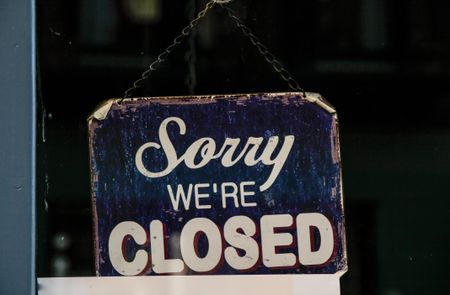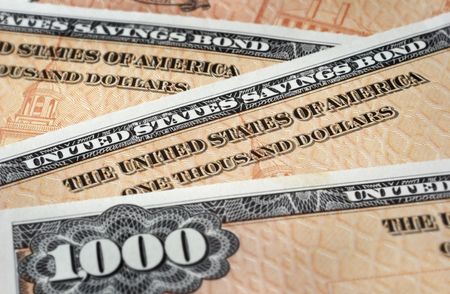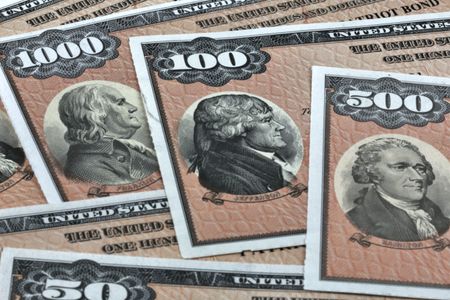Best Buys in Bonds
They're poised for big payoffs without big risks.
Suddenly, bonds are the talk of the investing world. while investors continue to fret about prospects for the stock market, they have concluded almost unanimously that the deals in the bond market are too good to ignore.
And despite a rollicking recovery that began late last year and continued into 2009, most sectors of the bond market (Treasury bonds being the notable exception) still offer good value. After all, what's not to like about corporate bonds paying 5% to 6% and tax-free municipal bonds paying 4% -- especially when inflation, one of the biggest enemies of bond investors, remains tame? And you don't even have to dip into junk-bond territory to get these returns.
Over the past year, bonds experienced the kinds of spills, chills and thrills that are usually reserved for stocks. Frantic selling on the part of nervous investors, unraveling hedge funds and others fueled some big losses. Investment-grade corporate bonds lost 7% on average in 2008; junk bonds lost a whopping 26%; and even ho-hum municipal bonds surrendered 4%. Meanwhile, a tremendous flight to safety inflated a bubble in the Treasury market. In December, the yield of the benchmark ten-year Treasury note bottomed at a whisper above 2% -- its lowest yield ever (bond prices move inversely with yields).

Sign up for Kiplinger’s Free E-Newsletters
Profit and prosper with the best of expert advice on investing, taxes, retirement, personal finance and more - straight to your e-mail.
Profit and prosper with the best of expert advice - straight to your e-mail.
| Row 0 - Cell 0 | How Well Do You Know Bonds? |
| Row 1 - Cell 0 | The Biggest and Best Bond Funds |
| Row 2 - Cell 0 | Anatomy of a Bond |
| Row 3 - Cell 0 | 5 Caveats When You Buy Bonds |
| Row 4 - Cell 0 | Bond Funds: One-Stop Solutions |
Investors finally began to correct for some of these excesses late last year. But even after this turnaround, it still pays to stock up on bonds. Fixed-income investors face "a fertile, if challenging market," says Tom Dugan, co-manager of Dodge & Cox Income fund. "There are both great opportunities and land mines out there."
To sidestep those mines, avoid the riskiest categories for now. There's too much economic uncertainty to justify jumping into junk bonds or emerging-markets bonds. "You still want to be in very high quality," says Mark Kiesel, a portfolio manager at Pimco, the big bond manager.
But Treasury inflation-protected securities and high-grade municipal and corporate bonds all offer a superb balance between yield and safety. Read on to find opportunities within each of these sectors.
In determining how much you should invest in bonds, balance your time horizon and risk tolerance. For an investor whose goal is more than ten years away, a 10% allocation is standard. If you're five years away from your goal, consider putting 30% to 40% of your portfolio in bonds. If you've retired, an allocation of at least 50% is reasonable, depending, again, on your risk tolerance.
The way you invest in bonds matters, too. Mutual funds are attractive for ease of use, but purchasing individual bonds insulates you from swings in their market price. (To learn about the risks of owning bonds, turn to the box on page 26. If you want to simplify things with a one-stop solution, see our all-in-one fund picks. In addition, download our rankings of 210 of the largest bond funds.)
Sweet deals in corporates
A powerful rally in prices of high-quality corporate bonds that started around Halloween should extend well into 2009. As a result, investment-grade corporates should deliver total returns of at least 8% this year and possibly more than 10%. That represents a remarkable turnaround from last fall, when prices for bonds issued by sound companies such as Deere and Wal-Mart tumbled and yields soared well beyond those of Treasury bonds with comparable maturities. These bonds lost value because of fallout from the credit crunch and turmoil among securities firms, which traditionally are major buyers and sellers of corporate debt.
Thanks largely to the Federal Reserve Board, the corporate-bond market is returning to normal. John Jansen, a former Wall Street bond trader and the author of a blog called Across the Curve, says that as long as the Fed keeps money cheap (its key short-term interest rate is effectively zero), yield-hungry investors will "scour the landscape" for corporate bonds rather than book a sure loss of purchasing power in low-yielding Treasuries. That realization is responsible for a 13% rise in price for the Dow Jones Corporate Bond index between November 1 and January 9.
[page break]
Despite the recent advance, there are still plenty of good deals in individual bonds and funds. One way to play the recovery is through iShares iBoxx $ Investment Grade Corporate Bond (symbol LQD), an exchange-traded fund. The ETF, which is well diversified among issuers and industries, yielded 5.0% in mid January. Among traditional mutual funds, one solid choice is Vanguard Intermediate-Term Investment-Grade (VFICX). It recently yielded 5.9%.
Last fall, you could have bought investment-grade IOUs yielding 7% or more. Now, you'll have to settle for just under 5% to 6% for bonds from solid companies, such as Amgen, FPL Group and Verizon Communications.
Consider, for example, a bond from Caterpillar, rated A2 by Moody's and A by Standard & Poor's, that recently yielded 5.7% to maturity in 2018. The bond is callable, meaning that the issuer can redeem it before it matures. Meanwhile, the bond pays 3.3 percentage points more than ten-year Treasuries do. Before the economy tanked, the gap between high-grade corporates and Treasuries was typically less than one percentage point (for a guide on how to buy an individual bond, see Anatomy of a Bond).
You should still take a pass on bonds issued by banks and real estate-related entities, regardless of yield, because ratings agencies are far more likely to downgrade these than the debt of industrial bonds. In the third quarter of 2008, 87% of the volume of corporate bonds downgraded were financials, according to Fitch Ratings. Downgrades generally knock 5% or more off the market value of a bond.
The new world of munis
Municipal bonds have been turned upside down. For several years, muni-bond yields have equaled or surpassed those of Treasuries. It's not supposed to be that way; munis almost always yield less than Treasuries because the interest they pay is generally exempt from federal income tax.
But that hasn't been true recently. For example, in early January a typical triple-A-rated state or local general-obligation bond maturing in ten years yielded 3.6%, and one maturing in 20 years yielded 4.9%. Treasuries of comparable maturities, meanwhile, yielded 3% or less. For a taxpayer in the 28% federal bracket, a tax-free yield of 4.9% is equivalent to 6.8% from a taxable bond.
Several developments account for this anomaly. In 2007 and early 2008, the sick state of bond-insurance companies forced municipal issuers to float bonds at higher interest rates than would have otherwise been the case or postpone offerings altogether.
More recently, states such as California and Florida have been running massive budget deficits. High unemployment and sinking real estate values threaten other state and local budgets. So investors are demanding higher returns to compensate for what they see as the growing risks of lending to state and local governments.
Still, the worst never seems to happen to muni-bond issuers. Defaults almost always stem from malfeasance or mismanagement, not economic events. Most municipal bonds are backed by the power to tax or by steady revenues from essential services, such as highway tolls or water and sewer bills.
Tim Parker, a financial adviser with Hudson Capital Management in Ridgewood, N.J., says that the track record of muni bonds is better than that of corporate issues and that it's easier for you (or a mutual fund) to build a muni portfolio because there are some 50,000 issuers of tax-exempt bonds. Parker says he's finding terrific yields in a wide range of tax-free bonds from most states (although he is steering clear of California bonds).
In high-tax states, such as California, Massachusetts, New Jersey and New York, the muni income advantage is especially impressive. That's because interest from bonds issued by your home state is exempt from state income taxes and may be exempt from local taxes as well.
A large and popular issuer is the Port Authority of New York and New Jersey, which owns airports, seaports, bus terminals, and most of the bridges and tunnels in and out of Manhattan. The authority's bonds are rated AA- by S&P and Aa3 by Moody's. An issue due in March 2028 with a coupon of 5.375% recently traded at 98 cents on the dollar, for a current yield of 5.5% and a yield to maturity of 5.6%.
[page break]
For a New York City resident in the 28% federal tax bracket, a 5.6% yield is equivalent to 8.7% from a taxable bond. The bond is not callable and is secured by virtually every transportation facility around New York City.
It's gotten much easier in recent years to screen for specific bonds and obtain such key details as call provisions and the price history (visit www.investinginbonds.com and www.municipalbonds.com). But for many investors, bond funds still make sense. This is especially true if you make small and repeat investments. Look for low expenses (avoid any fund that charges more than 0.5% annually) and check Morningstar and fund Web sites to get a sense of the quality and average maturity of the portfolio.
You can't go wrong with Vanguard Long-Term Tax-Exempt (VWLTX), which recently yielded 4.4% and charges 0.15% for annual expenses. Or consider Fidelity Intermediate Municipal Income (FLTMX), a member of the Kiplinger 25. The fund, which charges annual fees of 0.42%, recently yielded 3.7%.
Inflation-proof solution
The full faith and credit of the U.S. government still has plenty of appeal, even if yields on Treasuries don't. However, Treasury inflation-protected securities (TIPS) offer enticing yields and also benefit from Uncle Sam's backing.
TIPS pay interest twice a year according to a fixed rate, but their principal value, and therefore the dollar amount of each interest payment, adjusts according to the consumer price index. Although that adjusted principal would shrink with deflation, which some economists think could occur during the current recession, at maturity TIPS would return the larger of their adjusted principal or original principal.
Deflation scares have driven TIPS yields haywire, creating bargains for investors ready to buck these fears. On January 9, TIPS maturing in ten years yielded 1.89%, while the regular ten-year Treasury note yielded 2.43%. That means that over the next ten years, TIPS will do better than straight Treasuries if inflation averages a mere 0.54% per year. Meanwhile, the two-year Treasury note yielded 0.75%, compared with 3.79% for TIPS that mature in two years. That yield difference signals that TIPS will be the better deal as long as consumer prices don't fall more than 3.04% per year over the next two years. Investors are demanding such high yield premiums because they fear the principal value of their TIPS will drop.
Granted, deflation fears may be justified in the short run. The fall in consumer prices from September through November works out to an annualized deflation rate of 10.2%. And with flagging consumer demand and rising unemployment, it's hard to see the trend reversing soon.
But longer term, inflation remains the bigger fear. "The government's policy and the Fed's policy are clear: They will do whatever it takes to re-inflate the economy," says Mark Kiesel, of Pimco. Unless the current recession lasts for years or the economy falls into a depression, TIPS that mature in five years or beyond are solid bets.
You can buy new-issue TIPS without a fee at Treasurydirect.gov. You can also buy new issues and older TIPS trading in the secondary market in your brokerage account, although your broker may charge a transaction fee. Like interest from ordinary Treasuries, payments from TIPS are exempt from state and local taxes but not from federal taxes.
If flexibility is a priority, consider investing through a fund. Kiplinger 25 member Vanguard Inflation-Protected Securities (VIPSX) is a fine option. Under managers Ken Volpert and John Holl-yer, the fund returned 6.7% annualized from its inception in 2000 through 2008. That's an average of one percentage point per year better than the typical inflation-protected bond fund. The fund recently yielded 2.9%.
Note that the Vanguard fund lost 2.9% in 2008 and that the average fund in its category surrendered 4.3%. TIPS prices are driven primarily by inflation expectations. When investors expect high inflation, they flock to the protection TIPS offer, driving prices up and yields down. But if inflation expectations moderate, investors will demand a higher TIPS yield -- closer to that of regular Treasuries -- pushing down TIPS prices.
The one exchange-traded TIPS fund with a long-term record has more than proved its merits. The iShares Barclays TIPS Bond Fund (TIP) gained 3.9% annualized over the past five years through December 31. That's better than 85% of similar funds.
Get Kiplinger Today newsletter — free
Profit and prosper with the best of Kiplinger's advice on investing, taxes, retirement, personal finance and much more. Delivered daily. Enter your email in the box and click Sign Me Up.

-
 Financial Fact vs Fiction: This Roth Conversion Myth Could Cost You
Financial Fact vs Fiction: This Roth Conversion Myth Could Cost YouWhile some 'golden rules' stay in style forever, the financial landscape is constantly evolving. Here are five common myths to revisit (with more on the way).
By Scott McClatchey, CFP® Published
-
 Give Now or Leave an Inheritance? How to Balance the Options
Give Now or Leave an Inheritance? How to Balance the OptionsYou've saved enough money for retirement. But can you afford to give some to family or good causes — and when is best? These are the key points to consider.
By Deana Healy, CFP® Published
-
 Best Banks for High-Net-Worth Clients 2024
Best Banks for High-Net-Worth Clients 2024wealth management These banks welcome customers who keep high balances in deposit and investment accounts, showering them with fee breaks and access to financial-planning services.
By Lisa Gerstner Last updated
-
 Stock Market Holidays in 2025: NYSE, NASDAQ and Wall Street Holidays
Stock Market Holidays in 2025: NYSE, NASDAQ and Wall Street HolidaysMarkets When are the stock market holidays? Here, we look at which days the NYSE, Nasdaq and bond markets are off in 2025.
By Kyle Woodley Last updated
-
 Stock Market Trading Hours: What Time Is the Stock Market Open Today?
Stock Market Trading Hours: What Time Is the Stock Market Open Today?Markets When does the market open? While the stock market does have regular hours, trading doesn't necessarily stop when the major exchanges close.
By Michael DeSenne Last updated
-
 Bogleheads Stay the Course
Bogleheads Stay the CourseBears and market volatility don’t scare these die-hard Vanguard investors.
By Kim Clark Published
-
 The Current I-Bond Rate Until May Is Mildly Attractive. Here's Why.
The Current I-Bond Rate Until May Is Mildly Attractive. Here's Why.Investing for Income The current I-bond rate is active until November 2024 and presents an attractive value, if not as attractive as in the recent past.
By David Muhlbaum Last updated
-
 What Are I-Bonds? Inflation Made Them Popular. What Now?
What Are I-Bonds? Inflation Made Them Popular. What Now?savings bonds Inflation has made Series I savings bonds, known as I-bonds, enormously popular with risk-averse investors. So how do they work?
By Lisa Gerstner Last updated
-
 This New Sustainable ETF’s Pitch? Give Back Profits.
This New Sustainable ETF’s Pitch? Give Back Profits.investing Newday’s ETF partners with UNICEF and other groups.
By Ellen Kennedy Published
-
 As the Market Falls, New Retirees Need a Plan
As the Market Falls, New Retirees Need a Planretirement If you’re in the early stages of your retirement, you’re likely in a rough spot watching your portfolio shrink. We have some strategies to make the best of things.
By David Rodeck Published

